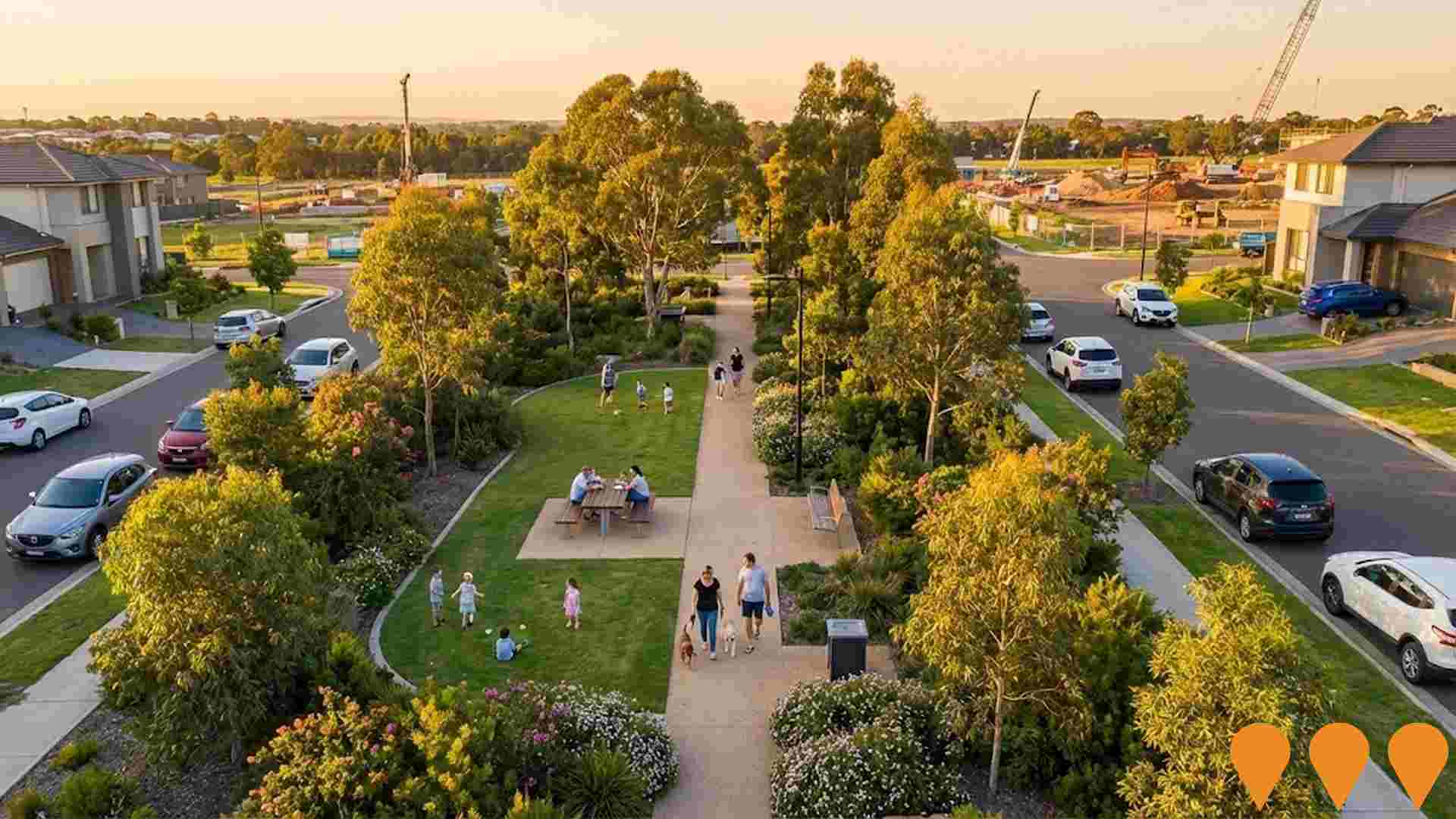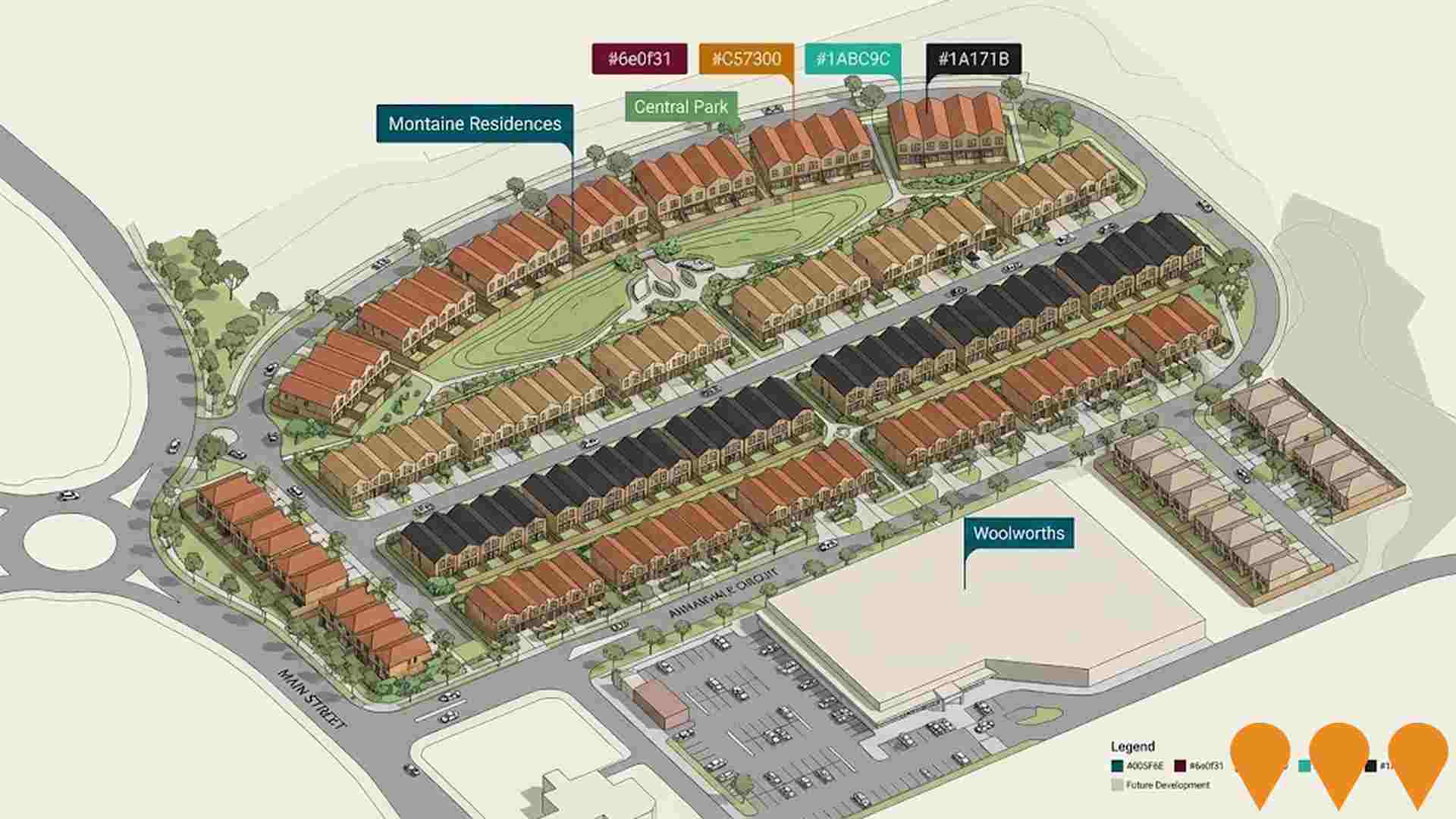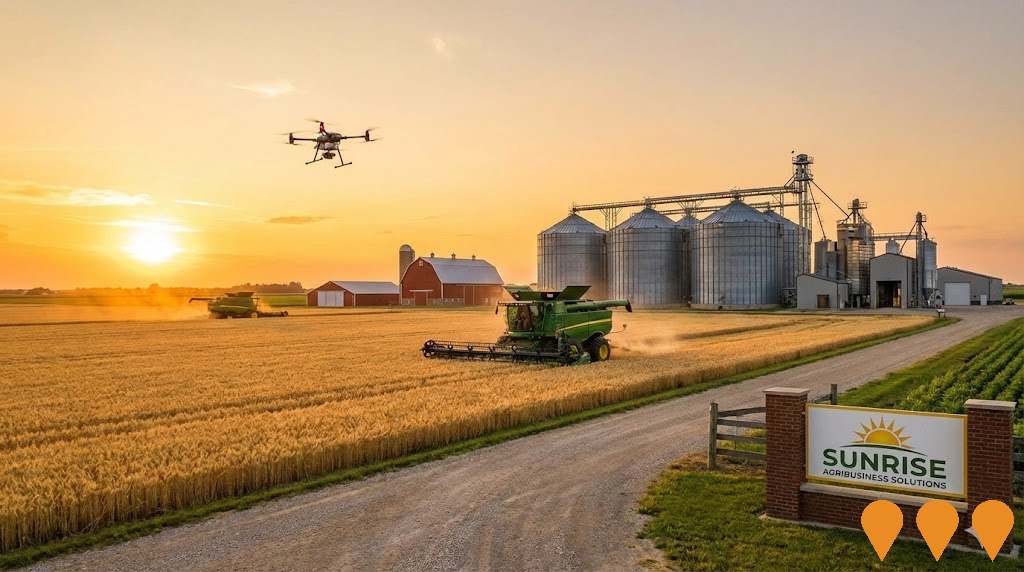Chart Color Schemes
est. as @ -- *
ABS ERP | -- people | --
2021 Census | -- people
Sales Activity
Curious about local property values? Filter the chart to assess the volume and appreciation (including resales) trends and regional comparisons, or scroll to the map below view this information at an individual property level.
Find a Recent Sale
Sales Detail
Population
Mount Annan is positioned among the lower quartile of areas assessed nationally for population growth based on AreaSearch's assessment of recent, and medium term trends
Mount Annan's population was approximately 19,482 as of November 2025. This figure represents an increase of 442 people since the 2021 Census, which reported a population of 19,040. The change is inferred from ABS data showing an estimated resident population of 19,501 in June 2024 and an additional 153 validated new addresses since the Census date. This results in a population density ratio of 1,475 persons per square kilometer, higher than average national locations assessed by AreaSearch. Natural growth contributed approximately 64.7% of overall population gains during recent periods.
AreaSearch is adopting ABS/Geoscience Australia projections for each SA2 area, released in 2024 with a base year of 2022. For areas not covered by this data, NSW State Government's SA2 level projections released in 2022 with a base year of 2021 are used. Growth rates by age group from these aggregations are applied to all areas for years 2032 to 2041. Future population trends suggest lower quartile growth, with the area expected to increase by 528 persons to 2041 based on latest numbers, reflecting a total increase of 2.8% over 17 years.
Frequently Asked Questions - Population
Development
The level of residential development activity in Mount Annan is very low in comparison to the average area assessed nationally by AreaSearch
Mount Annan has received approximately 24 dwelling approvals annually over the past five financial years, totalling 122 homes. In FY-26 so far, three approvals have been recorded. The area's population has declined, yet housing supply has remained adequate relative to demand, resulting in a balanced market with good buyer choice. New homes are being built at an average expected construction cost of $238,000, which is below regional norms, reflecting more affordable housing options.
This financial year, $1.2 million in commercial approvals have been registered, indicating minimal commercial development activity. Compared to Greater Sydney, Mount Annan has significantly less development activity, at 72.0% below the regional average per person. This scarcity of new properties typically strengthens demand and prices for existing properties. Nationally, this is also below average, suggesting the area's maturity and possible planning constraints. New developments consist of 70.0% detached dwellings and 30.0% townhouses or apartments, expanding medium-density options and creating a mix of opportunities across price brackets. This marks a significant shift from existing housing patterns, which are currently 97.0% houses, likely due to diminishing developable land availability and evolving lifestyle preferences.
Mount Annan reflects a highly mature market with around 1014 people per dwelling approval. Future projections indicate Mount Annan adding 547 residents by 2041. With current construction levels, housing supply should adequately meet demand, creating favourable conditions for buyers while potentially enabling growth that exceeds current forecasts.
Frequently Asked Questions - Development
Infrastructure
Mount Annan has strong levels of nearby infrastructure activity, ranking in the top 30% nationally
The area's performance is significantly influenced by changes in local infrastructure, major projects, and planning initiatives. AreaSearch has identified 43 such projects that are likely to impact the area. Notable projects include Narellan Vale Residential Expansion (Stage 3 & 4), Mount Annan Christian College Expansion, Australian Botanic Garden Mount Annan Masterplan, and Gledswood Hills Primary School (New). The following list details those projects most relevant to the area.
Professional plan users can use the search below to filter and access additional projects.
INFRASTRUCTURE SEARCH
 Denotes AI-based impression for illustrative purposes only, not to be taken as definitive under any circumstances. Please follow links and conduct other investigations from the project's source for actual imagery. Developers and project owners wishing us to use original imagery please Contact Us and we will do so.
Denotes AI-based impression for illustrative purposes only, not to be taken as definitive under any circumstances. Please follow links and conduct other investigations from the project's source for actual imagery. Developers and project owners wishing us to use original imagery please Contact Us and we will do so.
Frequently Asked Questions - Infrastructure
Oran Park Film Studios Precinct
A major film and television production studio complex in Oran Park, Western Sydney. The precinct includes three large soundstages, extensive set construction workshops, post-production facilities, production offices, and supporting infrastructure. Developed by Greenfields Development Company in partnership with the NSW Government, the $127 million project addresses the critical shortage of studio space in Australia and aims to attract international and local productions. Construction commenced in late 2024 with practical completion targeted for mid-2027.
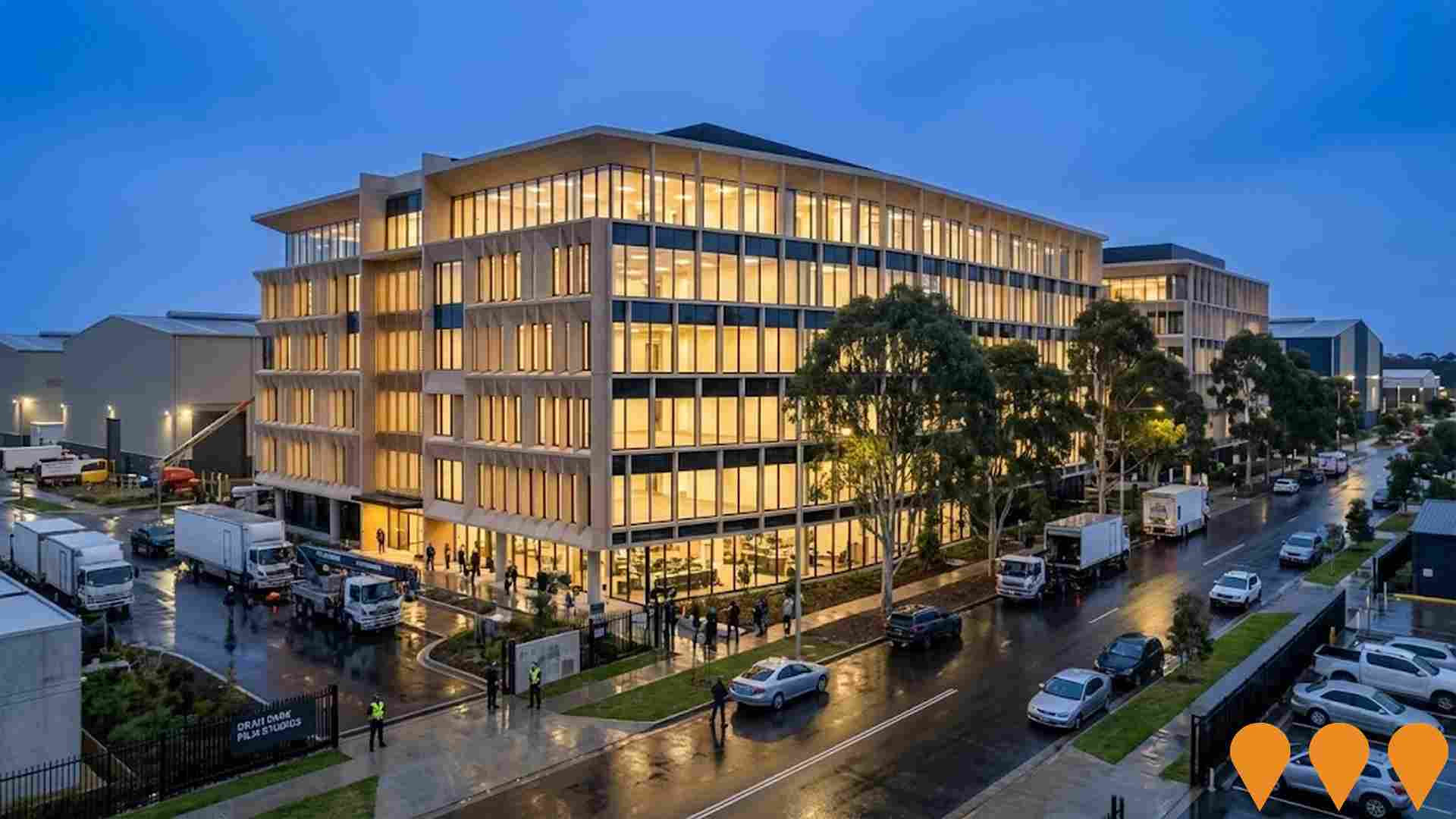
Australian Botanic Garden Mount Annan Masterplan
A $203.7 million transformation of Australia's largest botanic garden featuring a new Coolamon Lake precinct shaped like a traditional coolamon vessel, world-class biodome greenhouses showcasing Australian native flora, First Nations Garden with cultural awareness programs, native farm, accommodation facilities, over 10 kilometers of new walking and cycling trails, entertainment and event spaces, research and science facilities including expansion of the Australian PlantBank and National Herbarium, and ecotourism facilities. The masterplan designed by McGregor Coxall aims to restore Dharawal Country, regenerate endangered Cumberland Plain vegetation, and establish one of the world's leading sustainable scientific gardens while providing essential green space for Western Sydney's growing population.

Stockland Figtree Hill
Major residential development on a 216-hectare precinct by Stockland. The masterplanned community will deliver over 5,000 homes in total, with potential for 3,300 dwellings approved for the Gilead Stage 1/Figtree Hill section, with 600 dwelling lots unlocked immediately. The project is an all-electric community designed with green, open spaces, parks, walking trails, and proposed retail and educational infrastructure. Current construction is focused on the Appin Road Upgrade (Stage 1), including koala-proof fencing and koala underpasses, as well as new road carriageways and utility infrastructure. A $10,000 rebate is offered for customers building all-electric homes.
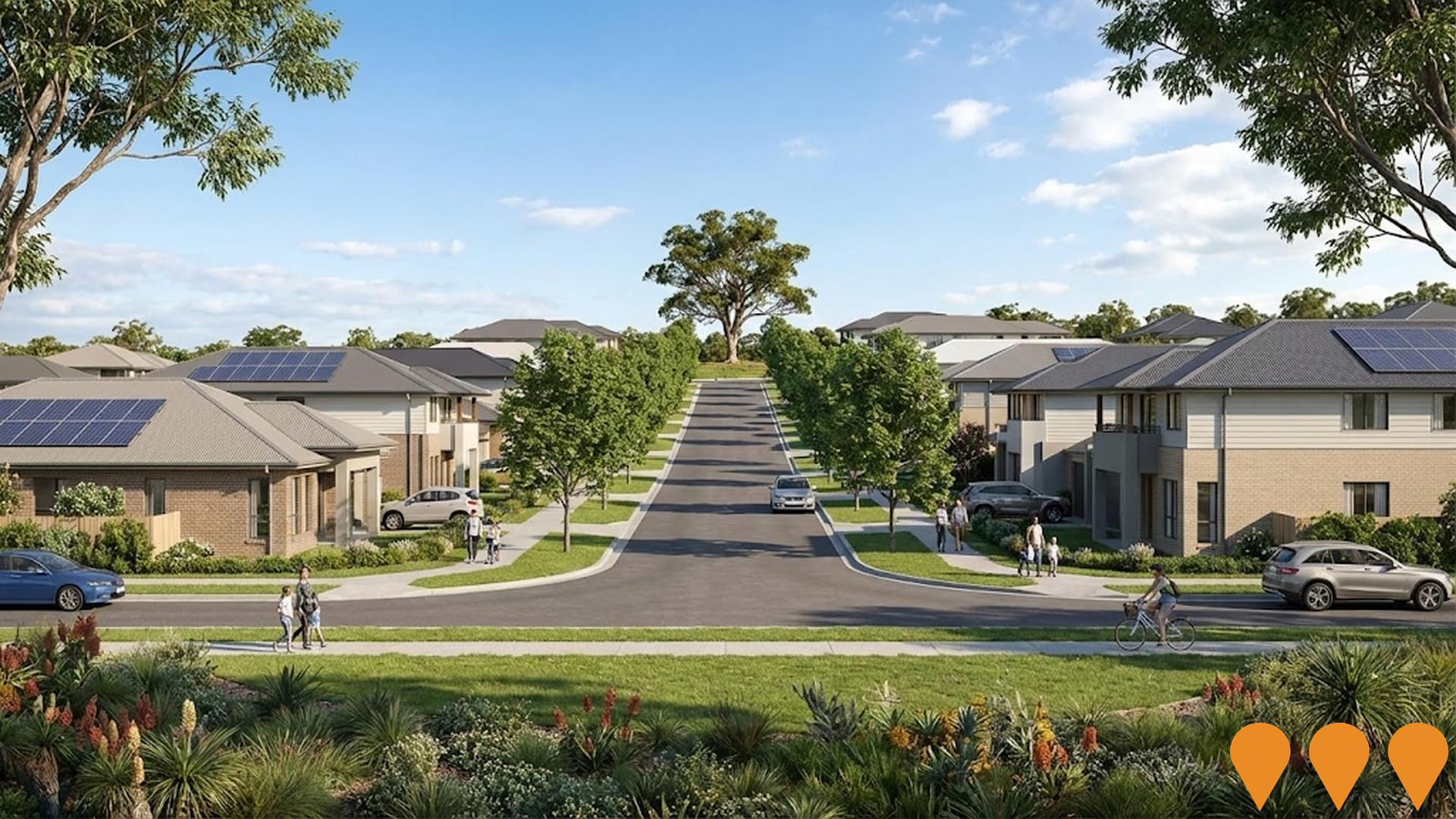
Narellan Road Upgrade
A $152 million, 6.8km upgrade of Narellan Road between Camden Valley Way, Narellan and Blaxland Road, Campbelltown. The project upgraded the road to six lanes divided with three lanes in each direction, improved intersections, installed traffic management systems, and added shared pedestrian/cyclist paths. Jointly funded by the Australian and NSW governments to reduce congestion, improve safety and travel times in this key transport corridor servicing south-western Sydney.
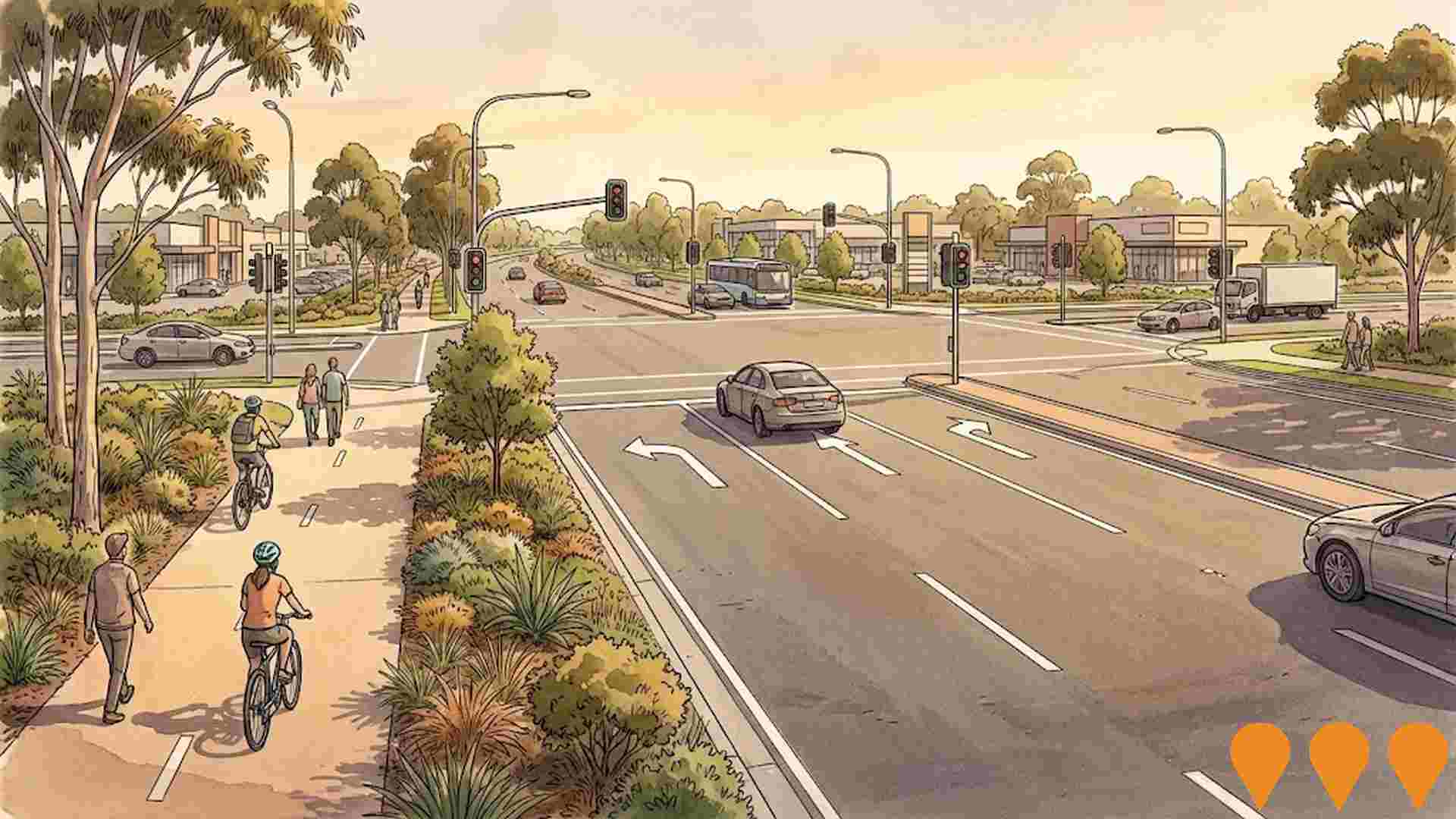
Outer Sydney Metropolitan Correctional Precinct
NSW Government concept for a new correctional precinct to address metropolitan prison capacity. A previously examined option in Wollondilly (south-west Sydney) was ruled out by the government in 2018 following site investigations and community opposition. Subsequent government materials and media reporting indicate the state has continued assessing metropolitan capacity solutions and alternative precinct locations (including areas around Greater Parramatta/Camellia), but as of August 2025 no confirmed site, scope or delivery timeline has been announced. The project therefore remains an uncommitted concept under assessment rather than an approved build.

Studley Park House Redevelopment
Adaptive reuse of the state-heritage Studley Park House as a 5-room boutique hotel and function spaces, plus a new connected 44-key hotel building and four residential flat buildings (148 apartments). Works include remediation, demolition of dilapidated defence structures, new road access, landscaping, civil infrastructure and Community Title subdivision.
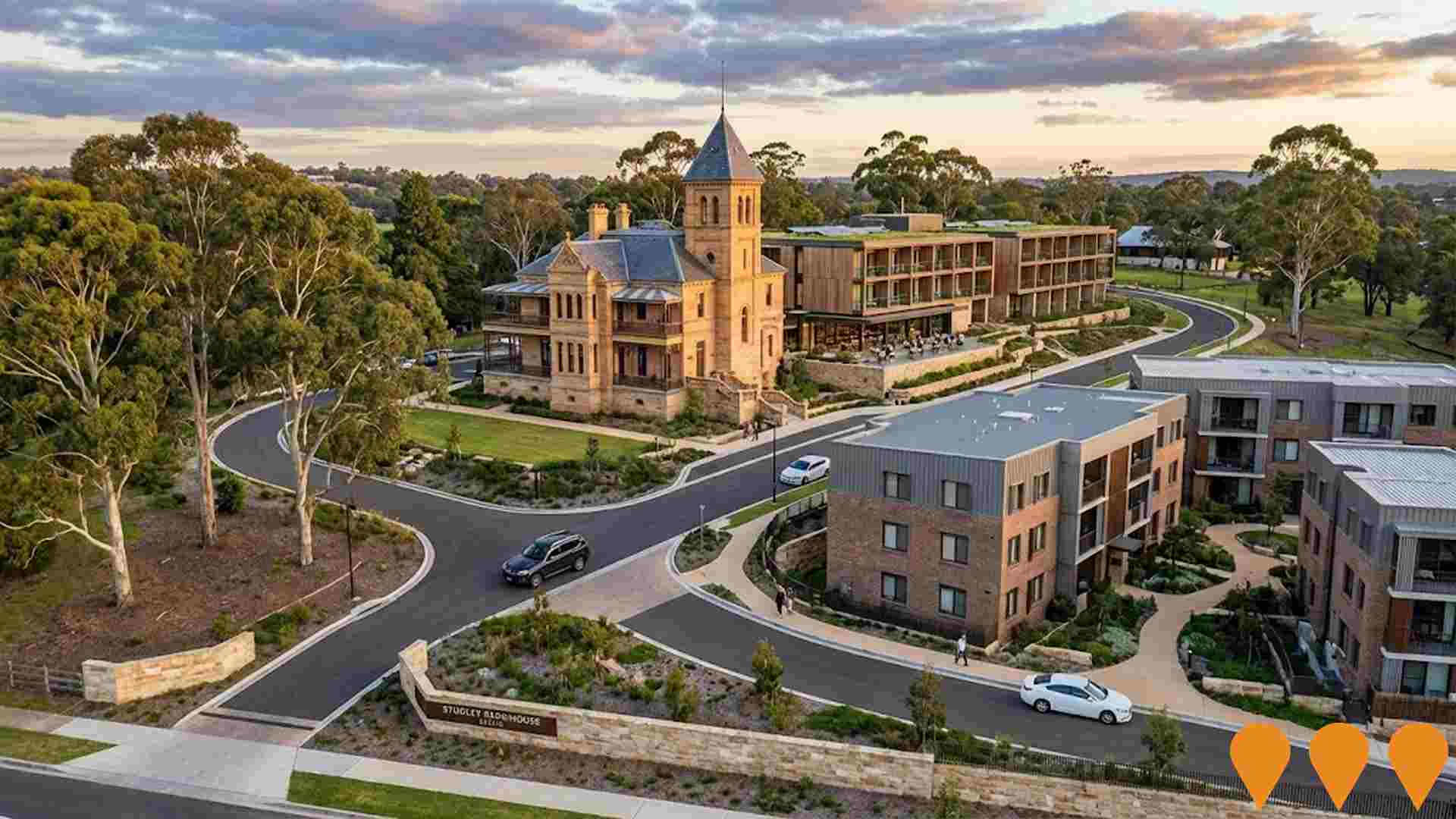
Gledswood Hills High School
New public high school with permanent facilities due to open Day 1, Term 1 2027. Temporary high school opened in 2025 for Year 7 and Year 8 students. Located at Gregory Hills Drive to serve the growing population of Gledswood Hills and Gregory Hills.
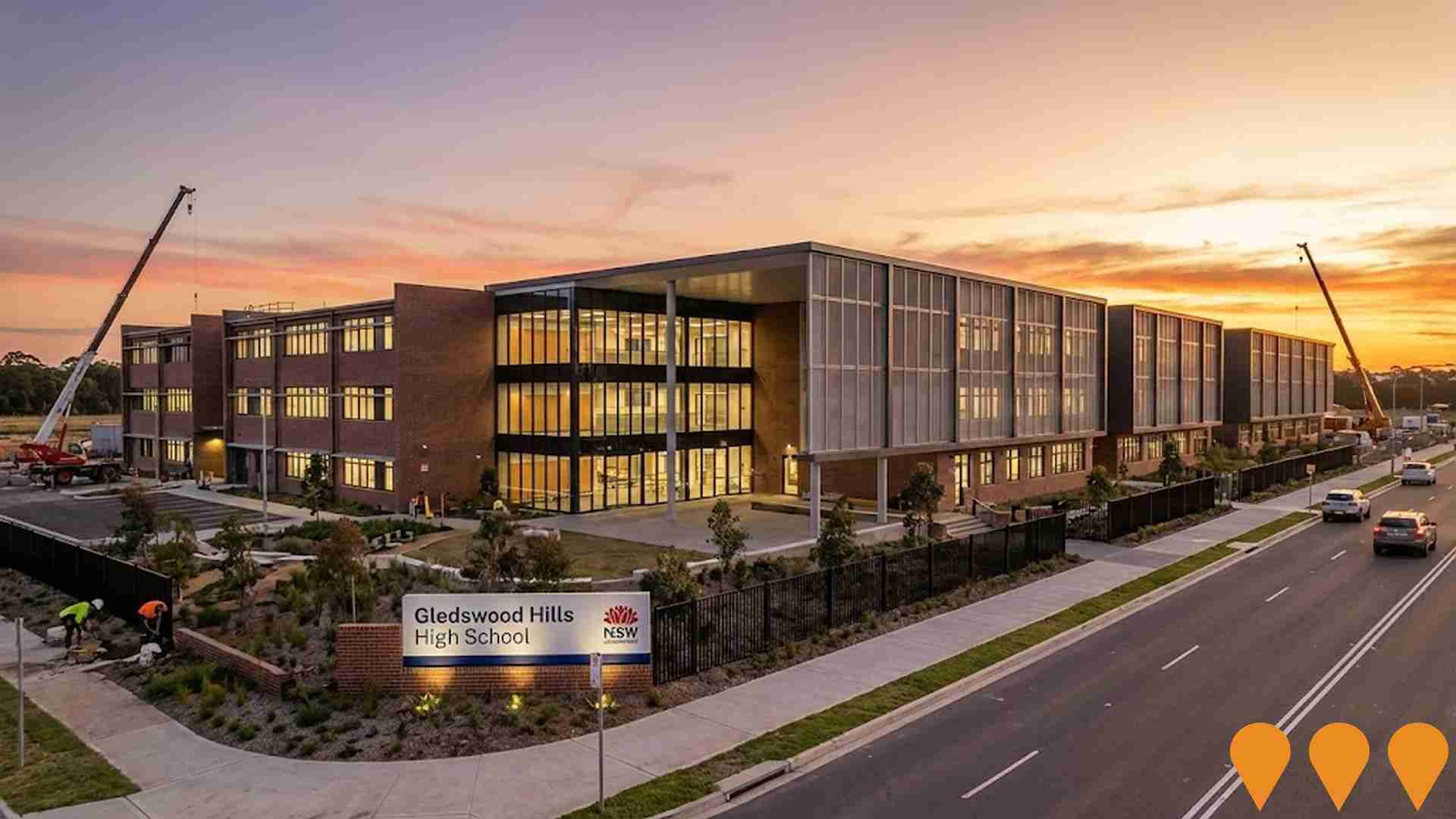
Mount Annan Christian College Expansion
Multi-phase campus expansion including demolition of existing buildings, tree removal, and staged construction of new single and multi-storey general learning areas. The masterplan aims to increase student capacity from 850 to 1,410 students. Block B (Kindergarten to Year 2 facilities) was completed in September 2023, with additional learning areas under construction. The development includes new classrooms, learning streets, car park reconfiguration, and associated site works across the 37-acre semi-rural campus.
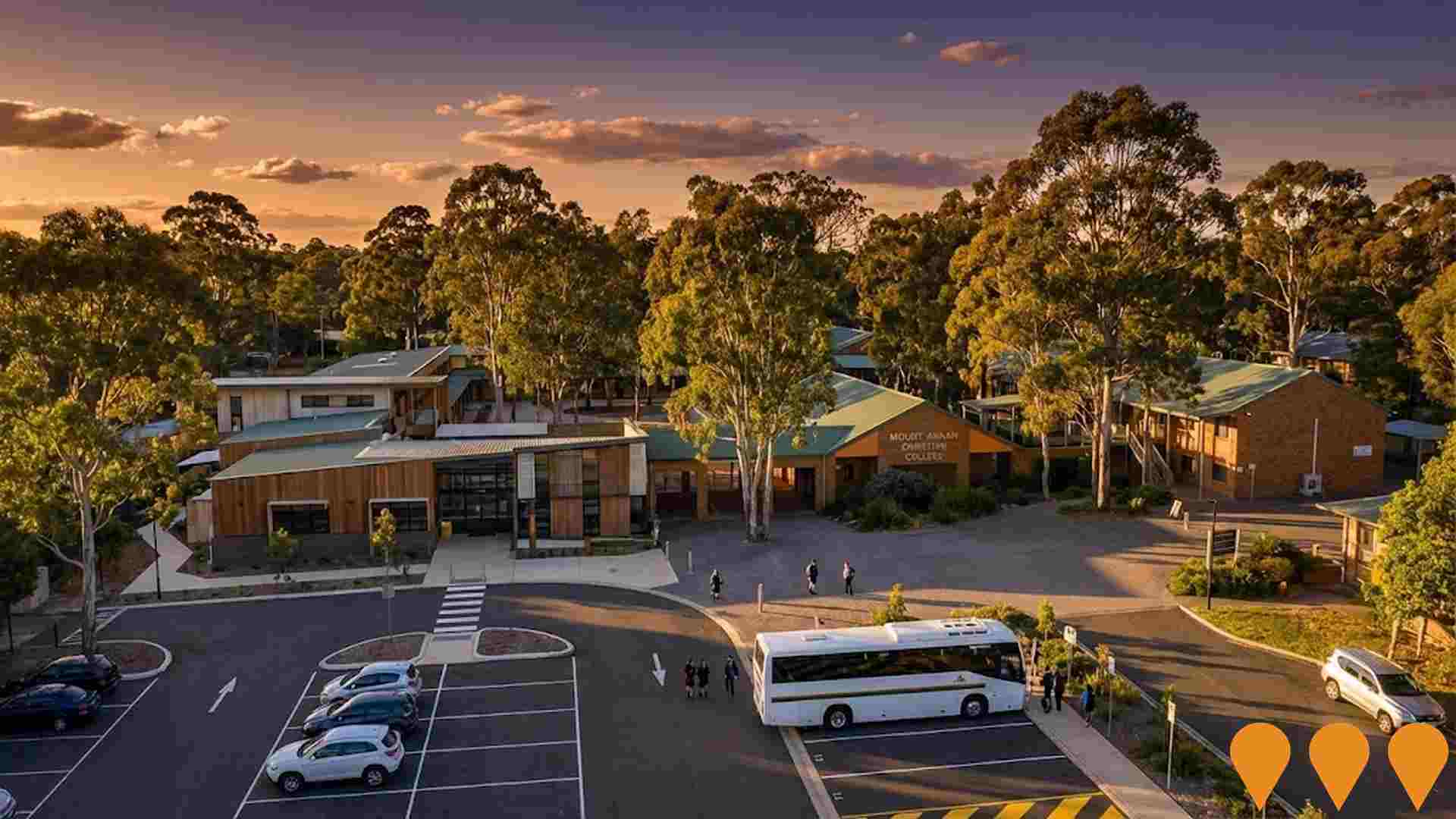
Employment
The exceptional employment performance in Mount Annan places it among Australia's strongest labour markets
Mount Annan has a skilled workforce with essential services sectors well represented. The unemployment rate as of June 2025 is 2.0%.
Employment growth over the past year is estimated at 5.2%. As of June 2025, 12,378 residents are employed while the unemployment rate is 2.2% lower than Greater Sydney's rate of 4.2%. Workforce participation in Mount Annan is 71.0%, compared to Greater Sydney's 60.0%. Employment is concentrated in health care & social assistance, construction, and education & training.
Construction employment levels are at 1.4 times the regional average. Professional & technical services have limited presence with 5.0% employment compared to 11.5% regionally. The area offers limited local employment opportunities as indicated by Census data. Over a 12-month period ending June 2025, employment increased by 5.2% while the labour force grew by 4.8%, causing unemployment to fall by 0.3 percentage points. In Greater Sydney, employment rose by 2.6%, the labour force grew by 2.9%, and unemployment rose by 0.3 percentage points. Jobs and Skills Australia's national employment forecasts from May 2025 project that national employment will expand by 6.6% over five years and 13.7% over ten years. Applying these projections to Mount Annan's employment mix suggests local growth of approximately 6.2%% over five years and 12.9% over ten years, based on a simple weighting extrapolation for illustrative purposes.
Frequently Asked Questions - Employment
Income
Income metrics indicate excellent economic conditions, with the area achieving higher performance than 75% of national locations assessed by AreaSearch
Mount Annan's median income among taxpayers was $59,594 in financial year 2022. The average income stood at $71,170 during the same period. This compares to figures for Greater Sydney of $56,994 and $80,856 respectively. Based on Wage Price Index growth of 12.61% since financial year 2022, current estimates would be approximately $67,109 (median) and $80,145 (average) as of September 2025. Census data reveals household incomes rank exceptionally at the 88th percentile ($2,395 weekly). The earnings profile shows that 38.1% of residents (7,422 people) fall within the $1,500 - 2,999 bracket, reflecting patterns seen in the broader area where 30.9% similarly occupy this range. A significant 34.4% earn above $3,000 weekly. High housing costs consume 15.8% of income, though strong earnings still place disposable income at the 87th percentile. The area's SEIFA income ranking places it in the 6th decile.
Frequently Asked Questions - Income
Housing
Mount Annan is characterized by a predominantly suburban housing profile, with ownership patterns similar to the broader region
Mount Annan's dwelling structures, as per the latest Census, consisted of 96.6% houses and 3.4% other dwellings (semi-detached, apartments, 'other' dwellings), compared to Sydney metro's 92.7% houses and 7.3% other dwellings. Home ownership in Mount Annan was at 24.0%, similar to the Sydney metro level, with mortgaged dwellings at 55.5% and rented ones at 20.5%. The median monthly mortgage repayment in Mount Annan was $2,196, lower than Sydney metro's average of $2,383. Median weekly rent in Mount Annan was recorded at $470, compared to Sydney metro's $480. Nationally, Mount Annan's mortgage repayments were higher at $2,196 versus the Australian average of $1,863, and rents were substantially above the national figure of $375.
Frequently Asked Questions - Housing
Household Composition
Mount Annan features high concentrations of family households, with a higher-than-average median household size
Family households constitute 85.5% of all households, including 49.2% couples with children, 21.4% couples without children, and 14.1% single parent families. Non-family households comprise the remaining 14.5%, with lone person households at 12.8% and group households at 1.6%. The median household size is 3.2 people, larger than Greater Sydney's average of 3.0.
Frequently Asked Questions - Households
Local Schools & Education
Educational attainment in Mount Annan aligns closely with national averages, showing typical qualification patterns and performance metrics
The area's university qualification rate is 19.8%, significantly lower than Greater Sydney's average of 38.0%. Bachelor degrees are most common at 13.7%, followed by postgraduate qualifications (4.2%) and graduate diplomas (1.9%). Vocational credentials are prominent, with 39.8% of residents aged 15+ holding them - advanced diplomas (11.5%) and certificates (28.3%). Educational participation is high at 32.3%, including 11.7% in primary, 9.6% in secondary, and 4.5% in tertiary education.
Mount Annan's five schools have a combined enrollment of 4,189 students. The area has typical Australian school conditions (ICSEA: 1011) with balanced educational opportunities. There are three primary and two secondary schools serving distinct age groups. School capacity exceeds residential needs at 21.5 places per 100 residents compared to the regional average of 16.9, indicating Mount Annan serves as an educational center for the broader region.
Frequently Asked Questions - Education
Schools Detail
Nearby Services & Amenities
Transport
Transport servicing is moderate compared to other areas nationally based on assessment of service frequency, route connectivity and accessibility
Mount Annan has 80 active public transport stops, all of which are bus stops. These stops are served by 61 different routes that together facilitate 2,283 weekly passenger trips. The accessibility of these services is rated as good, with residents on average being located 227 meters from the nearest stop.
Across all routes, there are an average of 326 trips per day, which equates to approximately 28 weekly trips per individual stop.
Frequently Asked Questions - Transport
Transport Stops Detail
Health
The level of general health in Mount Annan is notably higher than the national average with prevalence of common health conditions low among the general population though higher than the nation's average across older, at risk cohorts
Mount Annan exhibits above-average health outcomes with prevalence of common health conditions low among its general population, although higher than the national average among older and at-risk cohorts.
Approximately 55% (~10,715 people) of the total population has private health cover. The most prevalent medical conditions are asthma and mental health issues, affecting 8.2 and 8.0% of residents respectively. About 71.3% declare themselves completely clear of medical ailments, compared to 71.6% across Greater Sydney. Mount Annan has 11.4% (2,218 people) of its residents aged 65 and over, which is lower than the 12.9% in Greater Sydney. Health outcomes among seniors require more attention than those of the broader population.
Frequently Asked Questions - Health
Cultural Diversity
In terms of cultural diversity, Mount Annan records figures broadly comparable to the national average, as found in AreaSearch's assessment of a number of language and cultural background related metrics
Mount Annan's population showed cultural diversity similar to the wider region's average, with 81.8% born in Australia, 92.7% being citizens, and 86.1% speaking English only at home. Christianity was the predominant religion, at 62.6%, compared to 64.3% across Greater Sydney. The top three ancestry groups were Australian (28.5%), English (24.9%), and Other (9.3%).
Notably, Maltese (1.7%) and Lebanese (1.1%) were slightly overrepresented compared to regional averages of 1.8% and 1.0%, respectively, while Serbian representation was equal at 0.5%.
Frequently Asked Questions - Diversity
Age
Mount Annan's population is younger than the national pattern
Mount Annan has a median age of 35 years, which is slightly younger than Greater Sydney's 37 years and somewhat younger than Australia's national average of 38 years. The age group of 5-14 years old represents 15.1% of Mount Annan's population, higher than the Greater Sydney figure. However, the 25-34 age group is less prevalent at 11.8%. Between 2021 and present, the 75 to 84 age group has increased from 2.5% to 3.8% of Mount Annan's population. Conversely, the 5 to 14 age group has declined from 16.2% to 15.1%. By 2041, population forecasts indicate significant demographic changes for Mount Annan. The 75 to 84 age cohort is projected to grow by 847 people (116%) from 732 to 1,580. Notably, the combined 65+ age groups will account for 83% of total population growth, reflecting Mount Annan's aging demographic profile. In contrast, both the 0 to 4 and 55 to 64 age groups are expected to decrease in number.



